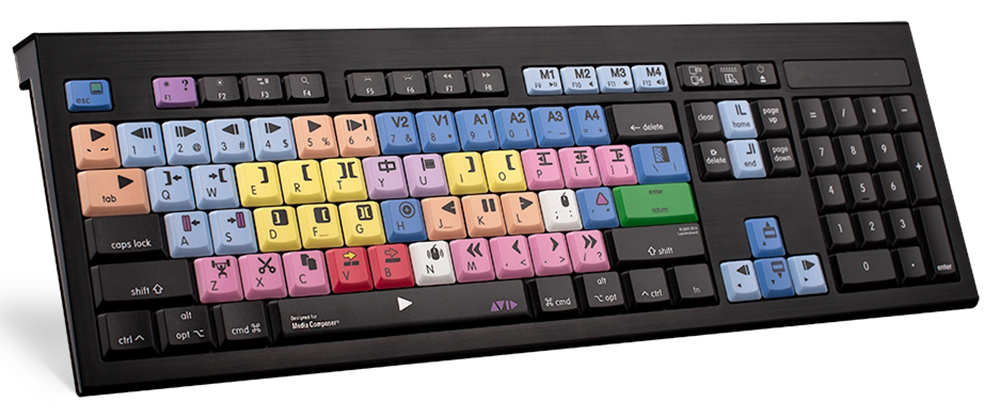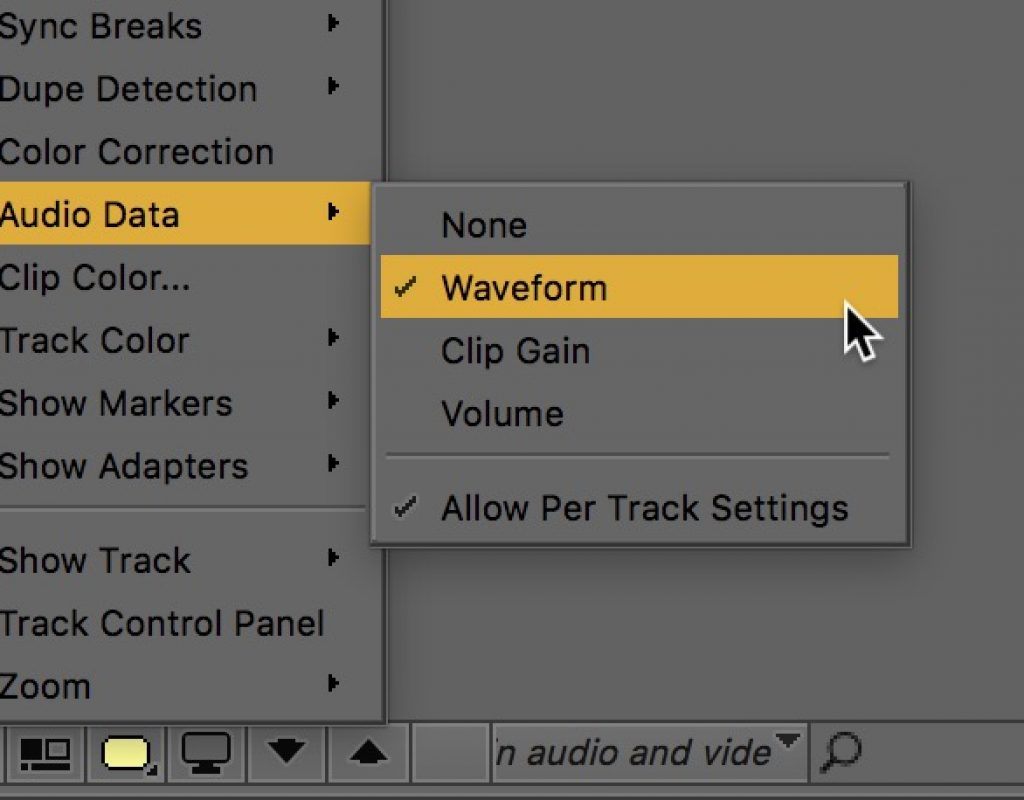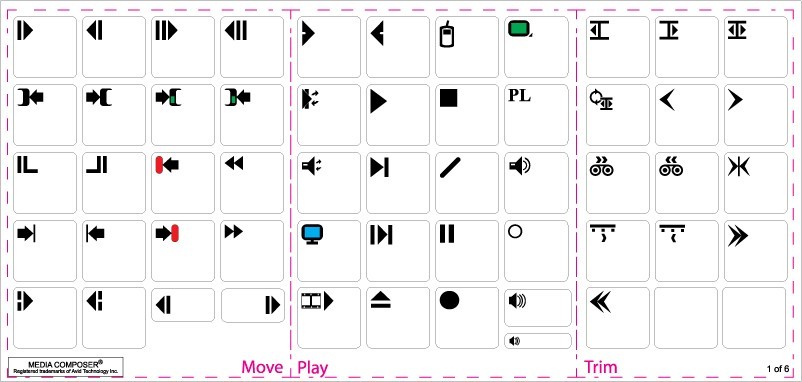
Be sure to keep each camera on a separate video track (V1 for Cam A, V2 for Cam B, etc. It is easiest to do this by first sorting your clips by timecode and then by tape name in your bin (your tape naming system should incorporate the date and tape number so that sorting by tape name will organize the shots by date and camera). Then, you simply overwrite the filler with your entire master clip (Mark the clips beforehand to be sure you’re getting the whole thing). From this point on, you can type the starting timecode of each clip into your record monitor, and the playhead will jump to that point in your sequence. Remember, Avid still won’t let you add filler at the end of a sequence without a funky song and dance that I won’t get into here. The best way to form your sequence is to lay down your first and last clips of the day and add filler in between until you can match your last clip’s timecode with the sequence timecode.
Keyboard mapping avid media composer 8 how to#
Here’s how to do it manually: Make sure your sequence timecode is set to match whatever the cameras were shooting: drop-frame or non-drop-frame, and set the sequence starting timecode to match the timecode of the first frame of your first clip (Click on the record monitor and select “Get Sequence Info” from the “File” menu). Without AutoSequence, you’ll have to make your sync map manually or use a macro program such as QuicKeys to automate and speed up the process. Be sure to cut in each camera sequence at the appropriate master timecode in your new multilayered sequence, as each camera most likely will have started at a different time of day.įor those of you still working on Meridiens, I feel your pain. After you do this for each camera, simply cut each sequence into a new multi-layered sequence (adding tracks and patching as necessary, so that each camera is on a different track) to create your day’s sync map. Avid will automatically create a new sequence with master timecode that matches the source timecode, with the appropriate amount of filler in between the clips. Select all of your clips that were shot by a single camera, and select “AutoSequence” from the “Bin” menu. With newer versions of Media Composer, this can be accomplished fairly simply. Make a sync map.įirst you will need to lay out all of your footage in one long sequence (I like to do one sequence for each shooting day), with the master timecode of the sequence corresponding to the timecode of your cameras. Put your thinking caps on – this tutorial is not for the faint of heart. Each camera can drop in and out, and the multigroup will automatically adjust and play smoothly throughout the duration of the footage. Luckily, there is a way to work around all of these issues and create convenient multigroups that contain all of your footage for a given scene and are perfectly in sync. Sometimes production jam-syncs the cameras once in the morning, and by the afternoon they have drifted several frames out of sync. Maybe both cameras stopped shooting for a period of time, but you want to include footage after the break in your group.


This can cause the shots in a group to cycle through all of the available window positions in the four-frame display and force you to use the nine-frame view with smaller thumbnails. Cameramen with itchy trigger fingers start and stop recording every few seconds, independently of the other cameramen. In practice, however, it is rarely this simple.

As long as all of the cameras start and stop around the same time with no drop-outs in between, and as long as the timecode was shot time-of-day and jam-synced between cameras right before the shoot, you can easily make groups in a matter of seconds. Media Composer’s “Group Clips” feature is best suited for very simple multicamera shoots.


 0 kommentar(er)
0 kommentar(er)
